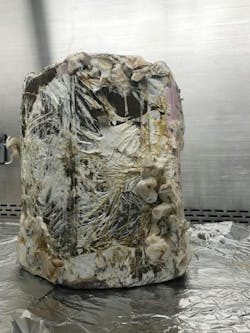Sustainable Housing: Growing Homes From Fungi
As NASA works toward human explorations of the Moon and Mars, any people staying off planet for long will need somewhere to live. They could build shelter the traditional way—lugging massive steel beams and other large materials on their spacecraft.
Or they could consider another option that researchers at NASA Ames Research Center are pioneering, which would take up a lot less space. And that’s using fungi—and fungi’s thread-like root structure called mycelia—to grow homes inside lightweight inflatables.
“Instead of shipping up these big, massive structures, we can use technology we happen to have on Earth that’s really good at self-replicating, and that’s life,” says Lynn J. Rothschild, senior research scientist at NASA Ames Research Center, located in California’s Silicon Valley. “We turn to life as the solution.”
The project, dubbed Mycotecture Off Planet, aims to build sustainable housing beyond planet Earth. These homes won’t be made of wood, steel, or concrete. Instead, they’ll consist of mycelial composites—significantly reducing the mass of structures on NASA missions and saving resources for other mission priorities.
“There currently are not customers asking for houses on the Moon or Mars, but there will be someday,” Rothschild says.
Just don’t call it mushroom housing, she adds. “We’re not making things out of mushrooms. That would be like saying we’re making habitats out of flowers when we really mean the wood of the tree.”
Mycotecture Off Planet Sustainable Housing
For the NASA project, the inflatables contain dormant fungi. Off planet, water and a few nutrients are then added so the mycelia grow into the shape of the inflatable—or any other shape. “Now, you don’t need to worry about joints or standard parts off the shelf. You can have these organisms grow to fill whatever confirmation you want,” Rothschild says. Mycelia could form objects such as furniture or garages.
Mass reduction isn’t the only benefit, Rothschild says. If the structure breaks, the material is self-healing. If the fungi bind to dehydrated wood chips, the structure takes on a wood-like appearance, creating a biophilic benefit. Fungi with melanin could be used to create structures that protect inhabitants from ultraviolet radiation. “And the other huge advantage is that, in principle, the whole thing is compostable, so you have a very green building material,” Rothschild says.
The project’s first two phases explored and tested various prototypes and used a planetary simulator to expose the materials to Martian and lunar conditions. With $2 million in funding from the NASA Innovative Advanced Concepts program, the project’s third and final phase will continue developing the technology to prepare for a possible demonstration mission in the future.
In partnership with the Ohio State University team working on Starlab—a low Earth orbit space station expected to launch in a few years—the Mycotecture team plans to use mycelia to build Starlab’s interior panels. The project will shed light on how the material fares and the benefits it provides in low Earth orbit, as well as the effects of microgravity on its growth. The team also might use its material to build some of the space station’s furniture, such as the beds and chairs.
Rothschild hopes NASA one day can take small mycelia home models, each maybe 6 to 12 inches in diameter, to the Moon—creating a tiny village of self-growing habitats. With a camera on the models, the team can watch the material work in miniature. “Then we’ll be able to say to NASA and potential commercial partners, ‘Look, this really does work,’” Rothschild says.
The technology can be used here on Earth, too—and already is. Cleveland’s Redhouse Studio, a partner on the Mycotecture project, earlier this year completed a building in Namibia using mycelia-based construction material. Another company, Ecovative, also creates mycelia-based materials, including the core of the façade panels in an affordable housing project in California.
Rothschild says the objective isn’t to have mycelia replace all other building materials. “When you build a house, you don’t say it’s got to be 100% stone. You have a palette of materials, and you use the appropriate one,” Rothschild says. “If we introduce a really exciting new tool that’s a part of the architectural palette for off planet and on planet, I feel like my job’s been done.”


